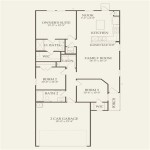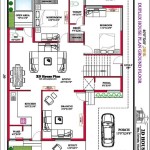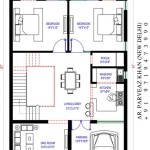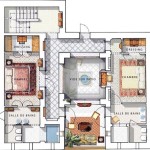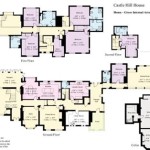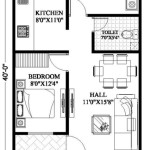The Essential Pillars of Designing a Perfect Floor Plan for Your Home
When it comes to building or renovating your house, the floor plan holds paramount importance in shaping the functionality, comfort, and aesthetic appeal of your living space. A well-designed floor plan can maximize space utilization, create seamless flow between rooms, and cater to your specific needs. Here are some essential aspects to consider when crafting the perfect floor plan for your home.
1. Determine Your Functional Requirements
Start by identifying your present and future needs for space and functionality. Consider the number of bedrooms, bathrooms, living areas, dining areas, and other rooms you require. Think about the types of activities that will take place in each room and how they will interrelate. For example, if you entertain frequently, you may want a large living room and dining area that flow seamlessly together.
2. Prioritize Traffic Flow
Create a floor plan that ensures smooth and efficient traffic flow throughout the house. Avoid unnecessary hallways or bottlenecks. Designate specific areas for entrance, circulation, and private zones. Ensure that the transitions between rooms are logical and minimize potential conflicts. A well-conceived traffic flow enhances both functionality and convenience.
3. Maximize Natural Light
Natural light has numerous benefits, including reducing energy consumption, improving mood, and creating a more inviting atmosphere. Position windows and doors strategically to maximize natural light penetration. Consider the orientation of your house relative to the sun's path. Place living areas and bedrooms in areas with ample natural light.
4. Consider Privacy and Separation
While creating open and flowing spaces is desirable, it's equally important to ensure privacy where needed. Designate separate areas for sleeping, working, and relaxing. Use physical barriers such as walls, doors, and partitions to create visual and acoustic separation. This helps maintain privacy and minimizes noise distractions.
5. Optimize Space Utilization
Make the most of every square foot by carefully considering space utilization. Choose furniture that is appropriately sized and scaled for the room. Use built-in storage solutions to maximize storage space without sacrificing valuable floor area. Consider multi-functional spaces that serve multiple purposes, such as a guest room that doubles as a home office.
6. Incorporate Personal Style and Preferences
Your floor plan should reflect your personal style and preferences. Choose architectural elements, finishes, and fixtures that align with your aesthetic sensibilities. Consider your choice of flooring, wall colors, and lighting to create the desired ambiance in each room. A well-designed floor plan complements your personal taste and creates a home that truly feels like your own.
7. Seek Professional Guidance
If you lack experience in floor plan design, don't hesitate to seek the guidance of an architect or interior designer. They can provide valuable insights, help you optimize space utilization, and ensure that your floor plan meets building codes and regulations. Their expertise can save you time, money, and headaches in the long run.
By carefully considering these essential aspects, you can create a floor plan that not only meets your functional needs but also enhances the overall livability, comfort, and aesthetic appeal of your home. Remember, a well-designed floor plan is an investment that will pay dividends for years to come.

The Top 10 New Affordable House Plans For 2024 Blog Eplans Com

10 Floor Plan Tips For Finding The Best House Houseplans Blog Com

What Makes A Good Floor Plan

Spacious And Open Best Floor Plans For Families Blog Homeplans Com

Floor Plans Types Symbols Examples

Featured House Plan Bhg 4176

Floor Plan The Timberridge 5v460t5 Modular Home Plans Homes

Spacious And Open Best Floor Plans For Families Blog Homeplans Com
10 Best Builder House Plans Of 2024

The Top 10 New Affordable House Plans For 2024 Blog Eplans Com

